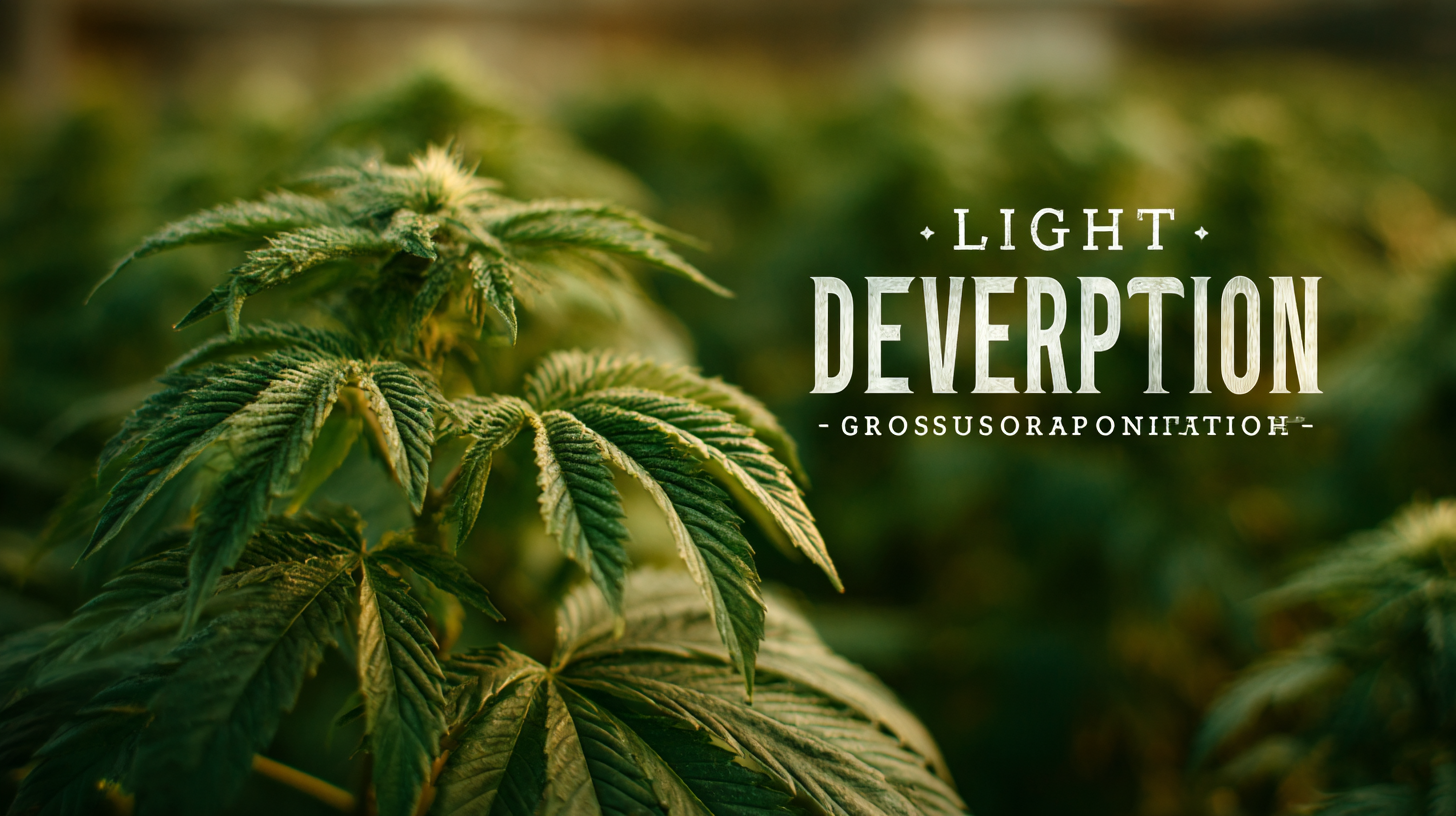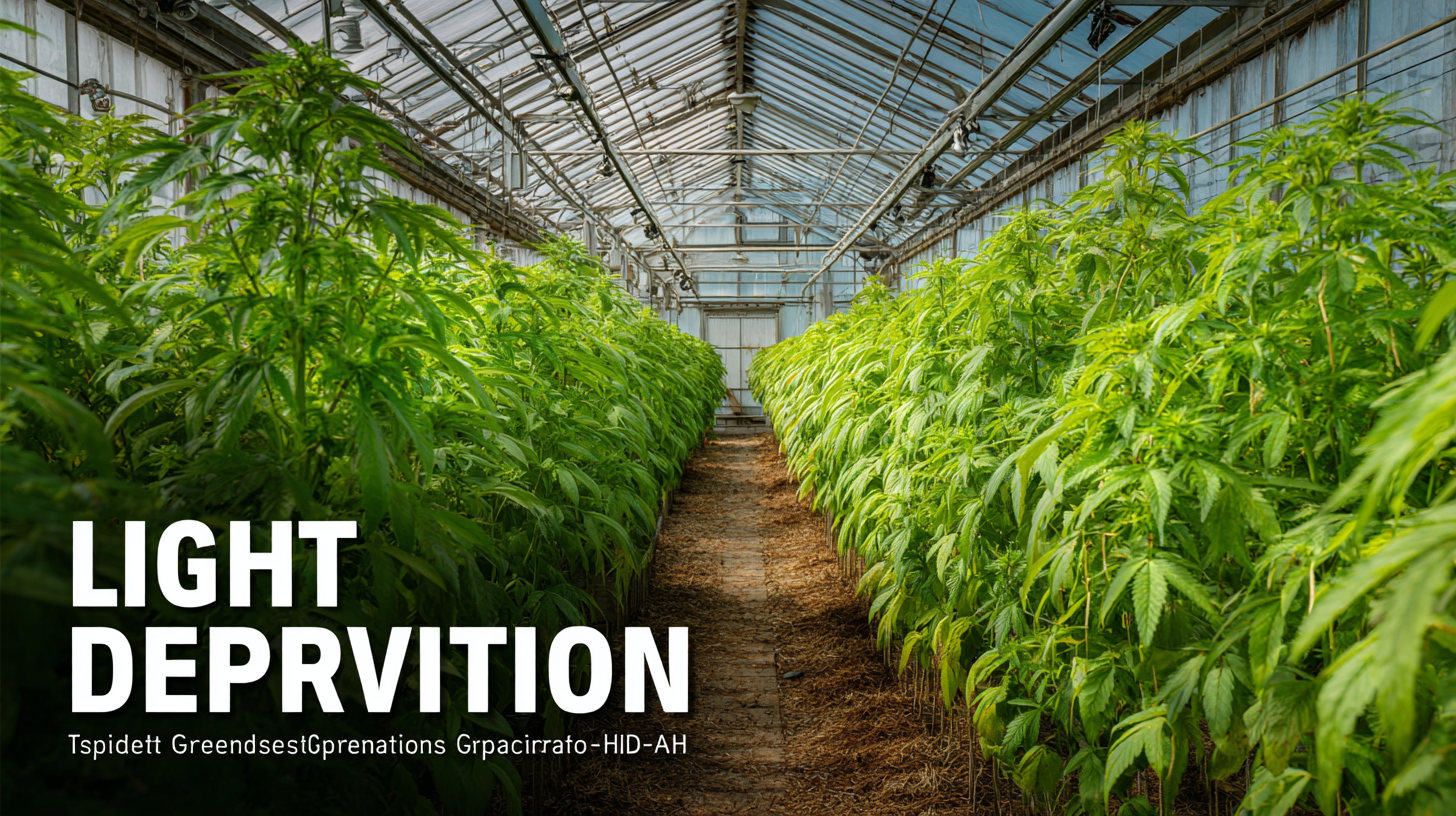
Transform Your Harvest with Best Light Deprivation Greenhouse Successful Applications in Agriculture
In the ever-evolving landscape of agriculture, Light Deprivation Greenhouses have emerged as a transformative solution, enabling farmers to optimize their harvests and meet the growing global demand for high-quality produce. According to recent industry reports, the global greenhouse market is expected to reach $43.4 billion by 2025, with light deprivation techniques playing a crucial role in this growth. These state-of-the-art structures not only enhance photosynthesis but also extend growing seasons and improve crop quality, thereby providing significant economic benefits to growers. With the backing of advanced manufacturing from top-tier Chinese factories, these greenhouses are now garnering international trust, proving that innovation and quality can indeed go hand in hand in revolutionizing agricultural practices worldwide.

Innovative Approaches to Light Deprivation: Maximizing Crop Yields in 2025
As the agricultural landscape evolves, light deprivation techniques have emerged as a game changer for maximizing crop yields. According to recent reports, greenhouses utilizing advanced light deprivation strategies can improve production efficiency by as much as 30% compared to traditional growing methods. These innovative approaches allow farmers to manipulate light exposure during critical growth periods, ensuring optimal conditions year-round. With insights from Dutch horticulture experts and Wageningen University scientists, the focus now shifts toward integrating climate control techniques that complement light deprivation.

To successfully implement these strategies, growers should consider the following tips: First, investing in engineered shading materials can significantly enhance light control while managing heat levels. Additionally, it's essential to monitor and adjust environmental parameters, such as temperature and humidity, to create an ideal microclimate inside the greenhouse. Lastly, collaboration with agronomists and access to the latest research will ensure that farmers make informed decisions tailored to their specific crop varieties.
Staying ahead in the agricultural game will require embracing these cutting-edge practices. By prioritizing innovative light deprivation applications, growers can not only boost their yields but also contribute to sustainable farming practices that stand the test of future challenges.
Key Technologies Revolutionizing Greenhouse Practices for Light Management
In contemporary agriculture, light management has become a critical factor in optimizing crop yields and ensuring successful harvests. Key technologies are revolutionizing greenhouse practices, allowing farmers to control light exposure with unprecedented precision. One such innovation is the use of automated shading systems, which can effectively regulate the amount of sunlight entering the greenhouse. This technology not only protects plants from excessive light, which can hinder growth, but also extends the growing season by allowing farmers to create ideal conditions regardless of outdoor weather fluctuations.
Another transformative approach is the integration of light deprivation methods, where growers can manipulate light cycles to induce flowering and boost crop production. By utilizing blackout films or adjustable covers, farmers can tailor light exposure to the specific needs of different plants. This has proven particularly beneficial for high-value crops like cannabis, where light control directly impacts quality and yield. The combination of these modern techniques ensures that light management is both efficient and effective, setting the stage for more sustainable agricultural practices in the future.
Transform Your Harvest with Best Light Deprivation Greenhouse Successful Applications in Agriculture
| Application Area | Key Technologies | Benefits | Challenges |
|---|---|---|---|
| Vegetable Production | Light Deprivation Systems, Automated Control | Improved yield, extended growing seasons | Initial setup cost, maintenance of systems |
| Flower Cultivation | Shade Cloth, Environmental Controls | Enhanced quality and color, pest management | Requires knowledge of light cycles |
| Fruit Production | LED Lighting, Automated Monitoring Systems | Increased fruit size, faster maturity | Energy costs, learning curve for technology |
| Medicinal Plants | Hybrid Greenhouse Designs, Infrared Sensors | Higher active ingredient yields, quality control | Environmental regulation compliance |
Case Studies: Successful Implementations of Light Deprivation in Diverse Cultures
Light deprivation techniques have transformed agricultural practices, enabling growers to optimize their crop cycles and enhance yields. A recent study demonstrated that cannabis cultivated in light deprivation greenhouses yielded up to 30% more compared to traditional methods. This is particularly relevant in states like California, where the demand for high-quality cannabis continues to rise. By manipulating light exposure, growers can induce earlier flowering and streamline their harvests, leading to multiple crop cycles annually.
Beyond cannabis, light deprivation has proven effective in various crops, such as tomatoes and strawberries. Research indicates that growers employing light deprivation methods can achieve an impressive 20% increase in strawberry yields, as it allows for extended growing seasons and improved fruit quality. Furthermore, a case study in Canada showcased a greenhouse that successfully implemented light deprivation for winter tomato production, resulting in a remarkable 15% reduction in production costs. Such advancements underline the versatility and efficacy of light deprivation techniques across different agricultural sectors, making them a critical component in modern farming strategies.

Future Trends: The Impact of Digital Solutions on Agriculture and Light Deprivation
As the agricultural landscape continues to evolve, the advent of digital solutions is significantly transforming how farmers approach cultivation. Among these innovations, light deprivation techniques have gained traction, leveraging smart technologies to optimize growth cycles. By controlling light exposure in greenhouses, growers can manipulate the flowering times of crops, leading to higher yields and more efficient resource use. Through digital monitoring systems and automated controls, farmers can now fine-tune the growing environment, ensuring that plants receive just the right amount of light to flourish.
Future trends indicate that integration of advanced analytics and machine learning will further enhance light deprivation practices. For instance, sensors can collect real-time data on plant health and environmental conditions, enabling precise adjustments to lighting schedules. This data-driven approach not only maximizes productivity but also minimizes waste, aligning with sustainable agricultural goals. As digital solutions continue to permeate the agricultural sector, the synergy between technology and light deprivation strategies is poised to revolutionize crop management, making it an exciting area for innovation and growth.
Transform Your Harvest: The Impact of Digital Solutions on Agriculture and Light Deprivation
Sustainability and Efficiency: Balancing Production with Eco-Friendly Practices
In today's agricultural landscape, the challenge lies in maximizing yield while adhering to sustainable practices. Light deprivation greenhouses offer a revolutionary solution, enabling growers to manipulate light cycles, thus optimizing plant growth and production. By controlling light exposure, farmers can cultivate crops more efficiently and potentially increase harvests without the need for harmful chemicals or excessive energy consumption.
The synergy of sustainability and efficiency is crucial for modern farming. Implementing light deprivation techniques not only streamlines the growing process but also conserves precious resources. These practices minimize water usage and reduce carbon footprints, aligning agricultural activities with eco-friendly principles. As the industry shifts towards greener operations, light deprivation greenhouses exemplify how innovation can meet the dual demands of enhanced productivity and environmental stewardship, ultimately supporting a more sustainable future for agriculture.
